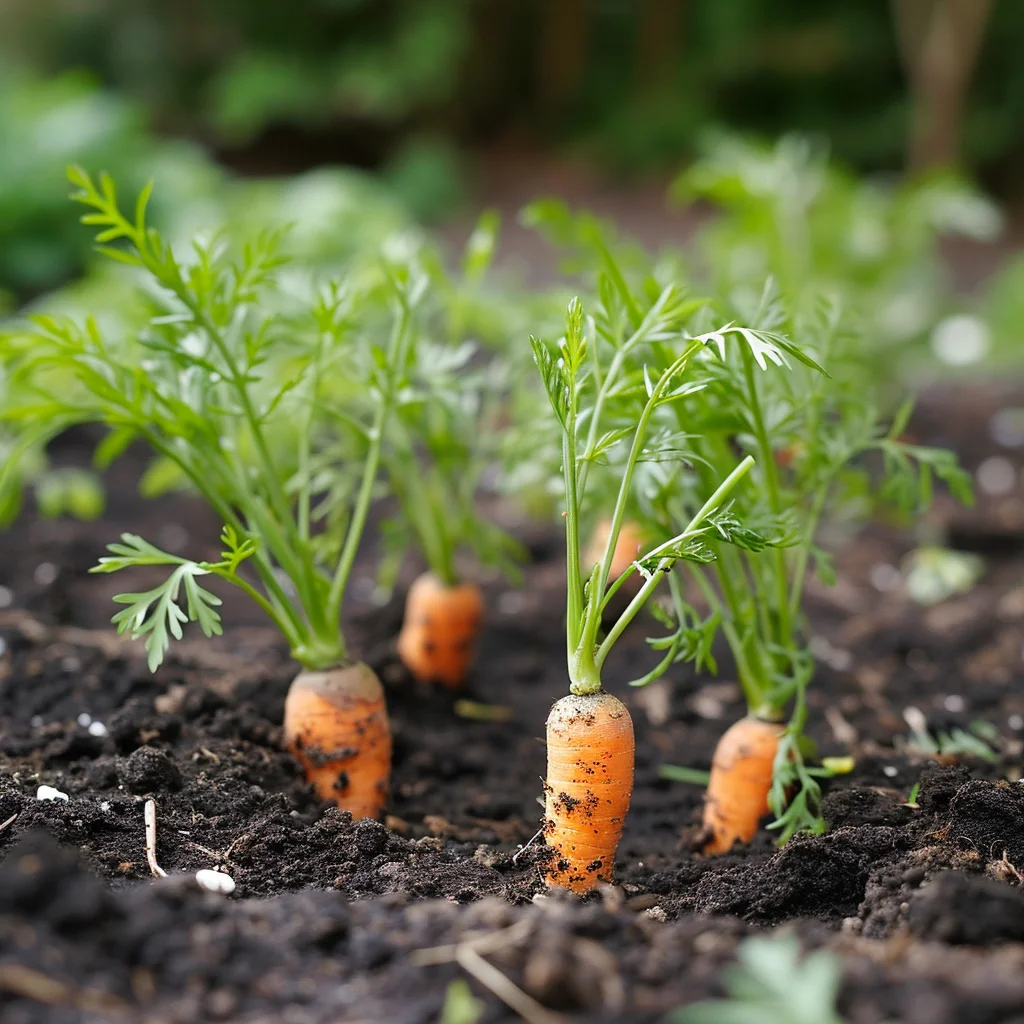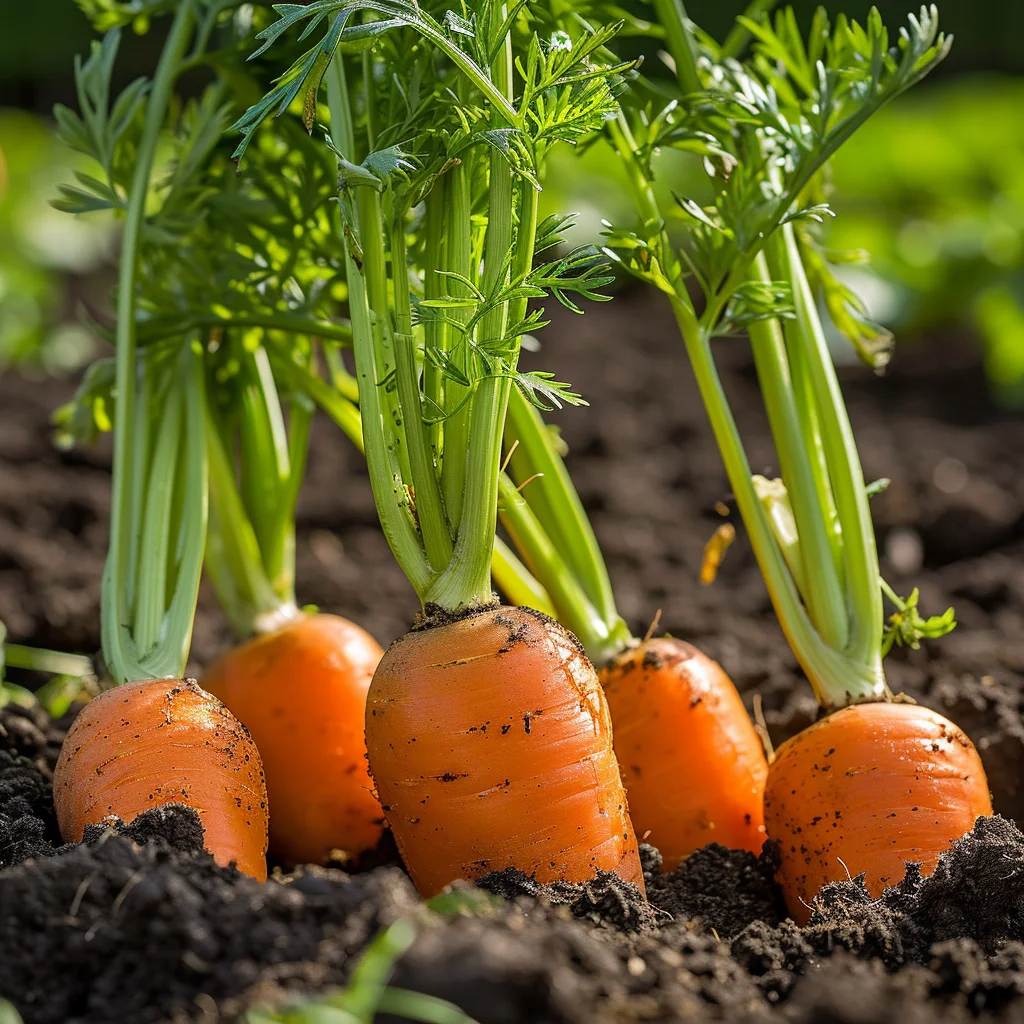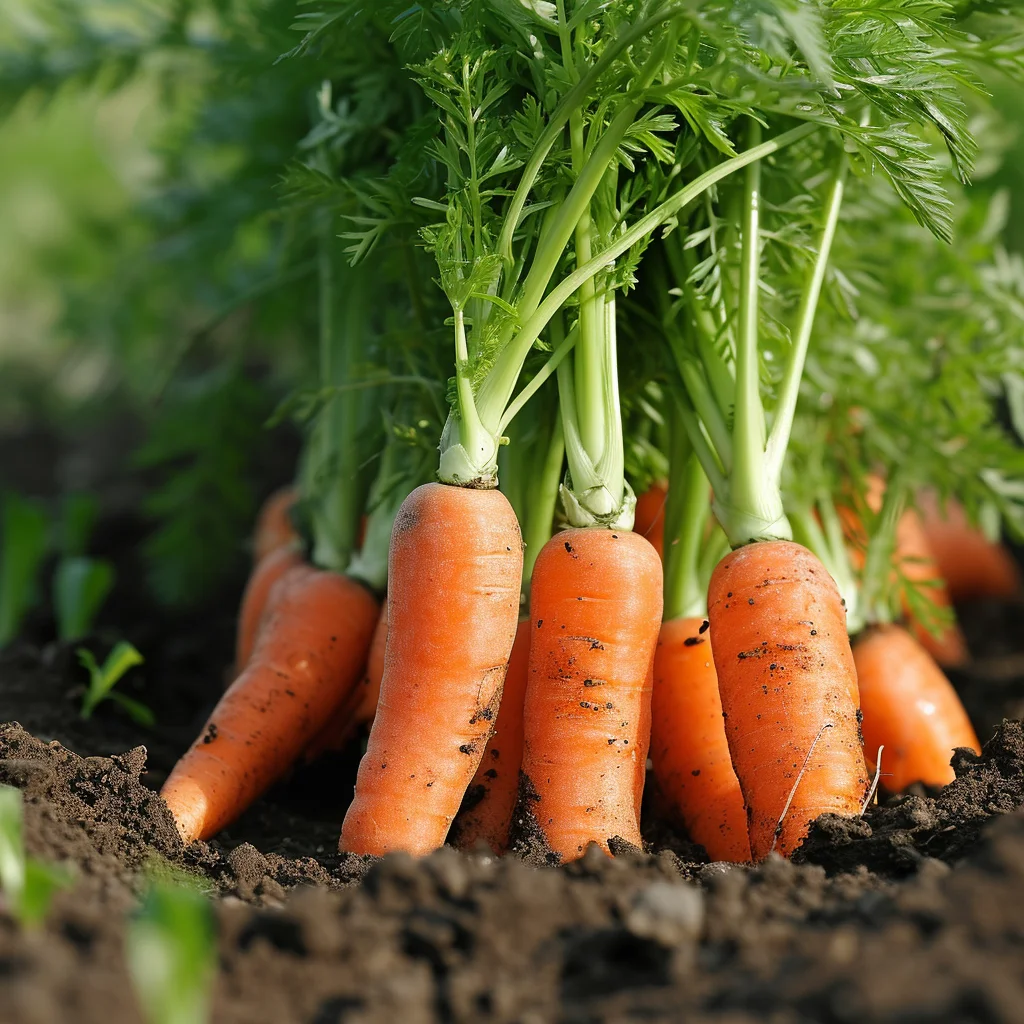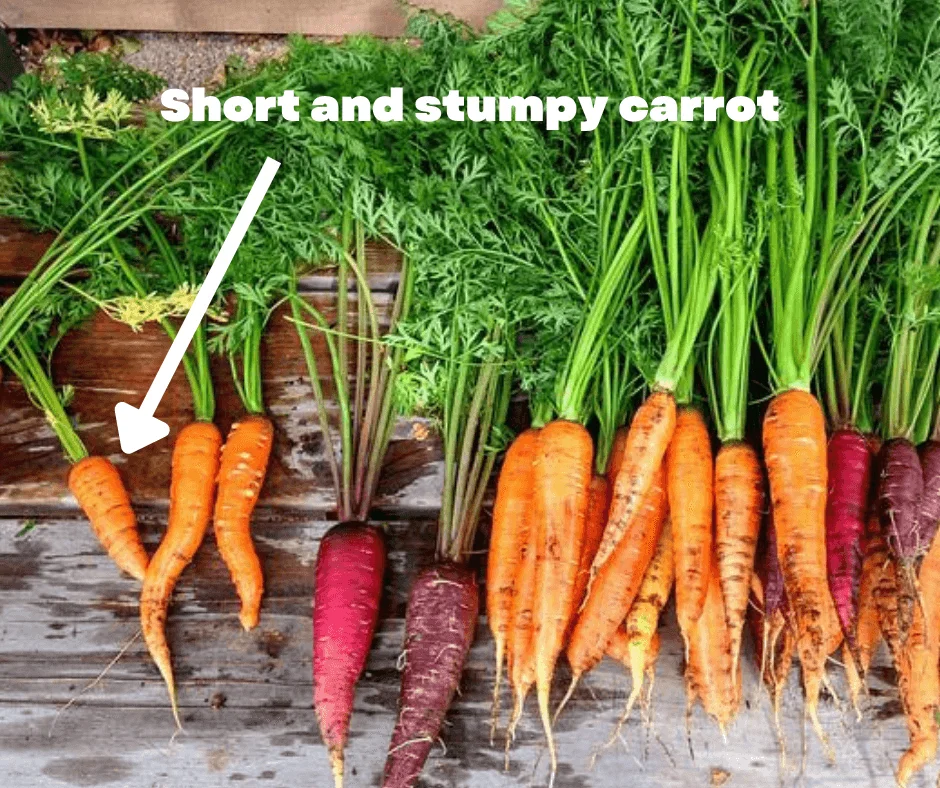So, you’ve taken up gardening and decided to grow some carrots. You painstakingly plant the seeds, patiently wait for them to sprout, and eagerly watch as they grow into sturdy seedlings. But, amidst the excitement, you start to wonder, when is the ideal time to thin out your carrot plants? Is there a point where it’s too late to thin them? In this article, we’ll explore the best time to thin carrots and shed some light on whether there’s a deadline for this crucial gardening task.
When to Thin Carrots
Why is Thinning Carrots Important?
Thinning carrots is an essential step in the cultivation process that ensures healthy and robust carrot plants. Carrots are root vegetables that require space to grow properly. If they are not thinned, they can become crowded, leading to stunted growth and irregularly shaped roots. Thinning also provides the remaining carrots with more access to sunlight, water, and nutrients, allowing them to develop into desirable shapes and sizes. Therefore, understanding when to thin carrots is crucial for successful carrot cultivation.
The Purpose of Thinning Carrots
Thinning carrots serves two primary purposes: promoting healthy growth and improving root quality. Carrot seeds are tiny and difficult to space out evenly when sown. Thinning helps to create adequate spacing between the seedlings, preventing overcrowding and promoting proper growth. It allows for better air circulation, reducing the risk of diseases and pests. Ultimately, thinning encourages root development by giving each carrot plant the necessary room to expand and access essential nutrients from the soil.
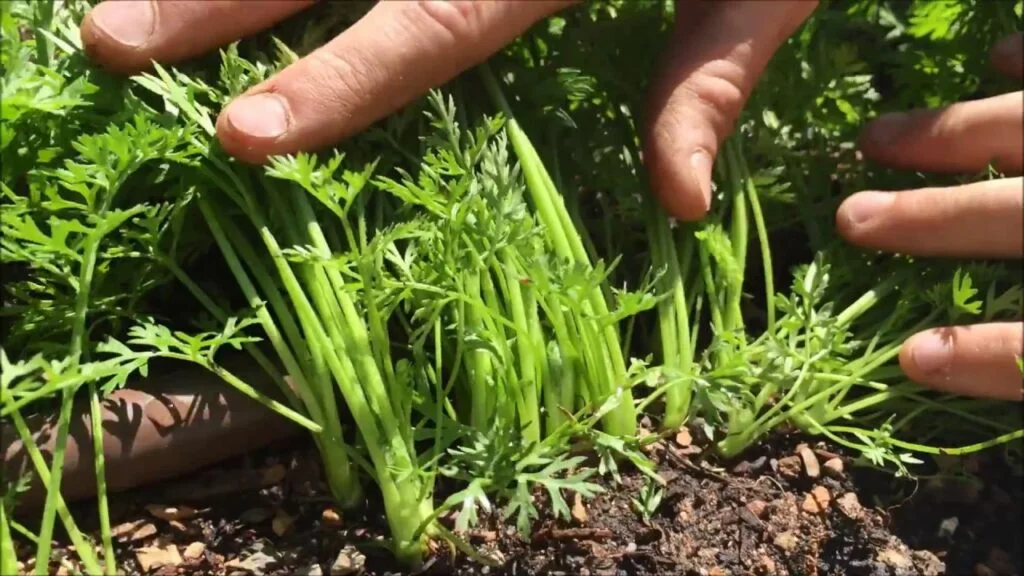
Factors to Consider Before Thinning Carrots
Before reaching for your gardening tools, it is important to consider a few factors to ensure the optimal time for thinning carrots:
Seedling Size: Wait until the carrot seedlings have grown to a manageable size before thinning. Very small seedlings may still be fragile and not ready for the process.
Soil Moisture: Thinning carrots is easier when the soil is slightly moist. If the soil is too dry, it might be challenging to remove the excess seedlings without disturbing the remaining plants.
Weather Conditions: Avoid thinning carrots during extremely hot or dry periods. Carrot plants are more susceptible to stress and damage during these conditions.
Growing Space: Consider the desired final spacing between carrot plants. This will depend on the carrot variety being grown, as some require more or less space to thrive.
Determining the Optimal Time for Thinning Carrots
The optimal time for thinning carrots may vary depending on various factors, including the carrot variety, climatic conditions, and seed germination rate. However, a general rule of thumb is to thin the carrots when they reach approximately 1 to 2 inches in height. At this stage, the seedlings are still small enough to remove easily, but large enough to handle the thinning process without causing harm.
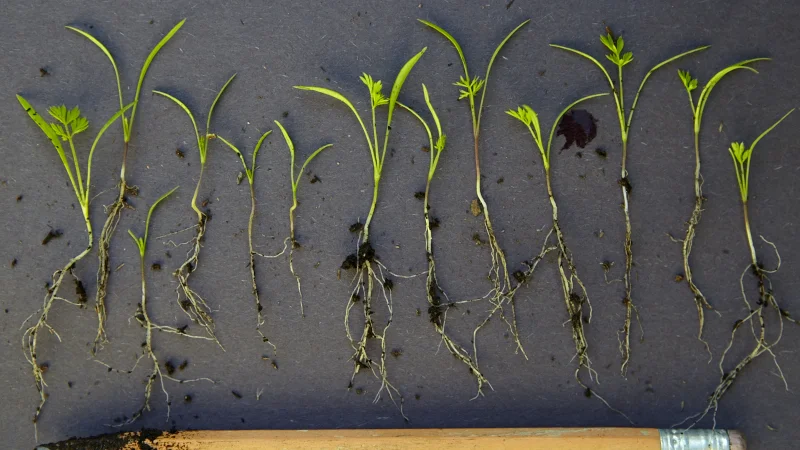
Signs That Carrots Need Thinning
Recognizing the signs that carrots need thinning is essential in ensuring timely intervention. Look out for the following indicators:
Crowded Growth: If the carrot seedlings are growing closely together, they need thinning. Overcrowding can lead to competition for resources and hinder proper growth.
Struggling Seedlings: If some seedlings appear weaker or have slower growth compared to others in the same area, it may be a sign that thinning is necessary. These struggling plants may benefit from extra space and resources.
Visible Clumps: If the carrot seedlings are forming clumps and seem tangled together, it is a clear indication that thinning is overdue. Untangling them can be challenging, and it is best to thin them immediately to avoid any further complications.
Recommended Tools for Thinning Carrots
Thinning carrots requires minimal tools, making it an easily manageable task for any gardener. Here are a few recommended tools:
Garden Gloves: Wearing gloves during the thinning process protects your hands from potential injuries and prevents the transfer of harmful bacteria or pathogens to the plants.
Small Scissors or Pruning Shears: These tools are useful for gently snipping off the unwanted seedlings at the soil line, reducing disturbance to the remaining plants.
Watering Can or Garden Sprayer: After thinning, it is crucial to water the area thoroughly to provide ample hydration to the remaining seedlings.

Steps to Thin Carrots
Follow these simple steps to ensure successful thinning of your carrot plants:
Prepare the Bed: Before beginning the thinning process, water the carrot bed thoroughly. This helps to soften the soil and minimize root damage during thinning.
Choose the Strongest Seedlings: Identify the strongest and healthiest seedlings to keep. Look for well-developed foliage and a sturdy, upright growth habit.
Remove Excess Seedlings: Using scissors or pruning shears, carefully snip off the extra seedlings at ground level. Be gentle to avoid uprooting nearby plants or causing any damage.
Maintain Ideal Spacing: Aim for a spacing of 1 to 3 inches between each remaining carrot seedling. This provides sufficient room for growth while preventing overcrowding.
Water Thoroughly: After thinning, water the bed thoroughly to settle the remaining seedlings and provide them with the moisture they need for optimal growth.
Precautions to Take While Thinning Carrots
While thinning carrots is a relatively simple task, it is essential to exercise caution to avoid inadvertently harming the plants. Here are a few precautions to keep in mind:
Gentle Handling: Handle the seedlings with care to avoid damaging the roots or pulling up nearby plants accidentally. Delicate roots may be sensitive to disturbance.
Avoid Overwatering: While watering after thinning is necessary, be mindful not to overwater, as it may lead to excessive dampness or waterlogging, which can inhibit root growth.
Sun Protection: After thinning, consider providing some shade or protection from direct sunlight to prevent stress on the remaining seedlings. This can be achieved using shade cloth or by transplanting them to a partially shaded area.
Frequency of Thinning Carrots
Carrot plants may require thinning more than once during their growth cycle, especially if they are quick-growing or the initial thinning was insufficient. A second thinning session is typically conducted approximately two to three weeks after the initial thinning. However, it is important to assess the spacing between the remaining seedlings and the overall health of the plants to determine if another thinning is necessary.
Common Mistakes to Avoid When Thinning Carrots
To ensure the success of your carrot thinning efforts, avoid these common mistakes:
Waiting Too Long: Delaying the thinning process can lead to crowded and stunted carrots. Take action as soon as the seedlings reach the appropriate size.
Thinning Seedlings Too Early: On the other hand, thinning the seedlings too early can result in uprooting healthy plants and leaving empty spaces in the bed. Wait until the seedlings have established themselves adequately.
Removing Strong Seedlings: Mistakenly removing healthy and sturdy seedlings instead of the weaker ones can impact the overall harvest. Be selective and choose the strongest plants to keep.
Improper Spacing: Failing to provide enough space between the remaining seedlings can lead to continued overcrowding and hinder root development. Ensure the spacing aligns with the carrot variety’s requirements.
Neglecting Post-Thinning Care: After thinning, it is crucial to provide proper care and maintenance to the remaining seedlings. Neglecting their needs, such as watering and protection from harsh weather conditions, can hinder their growth.
By understanding the importance, timing, and techniques of thinning carrots, you can ensure healthy and thriving carrot plants in your garden. Monitoring their growth, recognizing the signs that thinning is required, and following the recommended steps will lead to a bountiful harvest of delicious, homegrown carrots. So don’t wait too long, grab your gardening tools, and give your carrots the space they need to reach their full potential!
